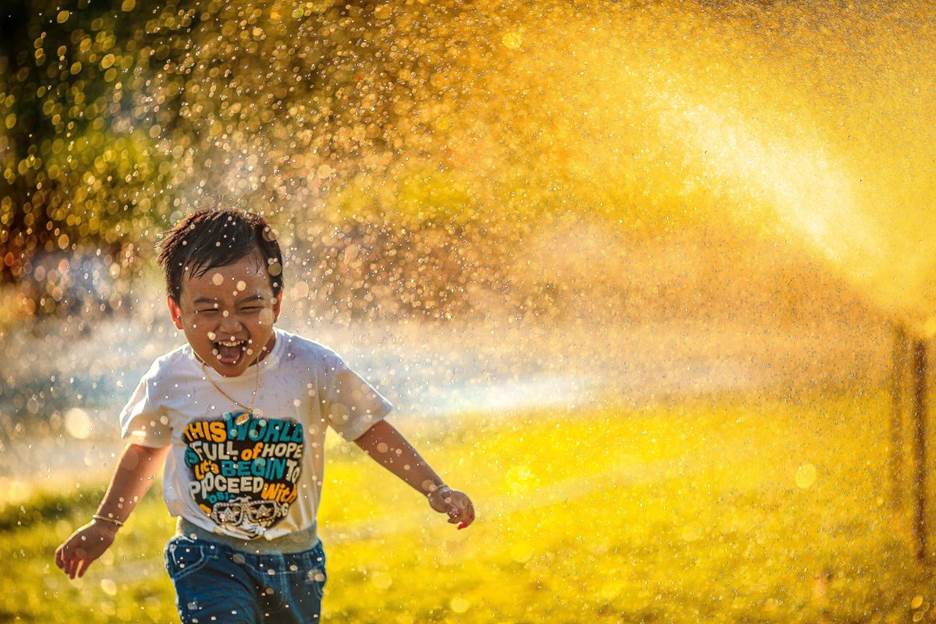
Extreme Heat Is on Its Way, But So Is Help
By Mark Hedin
As the summer season begins — with three-digit temperatures predicted for the Fourth of July holiday —the California Governor’s Office of Emergency Services is working to keep people safe through the wave of extreme heat.
At a June 29 press briefing hosted by California Black Media and Ethnic Media Services, Cal OES and Listos California unveiled a package of safety guidelines prepared in expectation of climate extremes.
Alf LaMont, of LaMont Digital, presented a package of “Summer of Safety” graphics providing tips on keeping people ready for and safe during potential summer emergencies: wildfires, flooding, power outages and high temperatures. They’re printed in English, Spanish and more than a dozen other languages, and available at listoscalifornia.org .
No Sky July
“In California, we don’t actually see a lot of our record all-time temperatures until late in the season,” National Weather Service meteorologist Brayden Murdock said, citing “June gloom, no-sky July and ‘Fog-ust’ for a good portion of August.”
“Usually, our strongest heat impacts wind up being more toward late August going into September,” he said. But high temperatures lead to low winds, he said, “so we don’t get that sea breeze that helps us cool down.”
“Think of it more as a marathon than an individual sprint.”
Hot, Dry Summer Ahead
And the end of 2023’s relatively cool temperatures so far, he said, will now bring increased snow melt in the Sierra. Already, the state has closed off some river stretches.
“Summers are becoming hotter and drier, and families are going to want to cool down in the water,” said Cal OES Assistant Director of Crisis Communications and Public Affairs, Diana Crofts-Pelayo. “But it is very dangerous right now. We have already seen too many people that have lost their lives. So do what you can to stay indoors to stay cool!”
Cal OES is making mutual-aid arrangements between state and local fire agencies “on a huge push to train swift water rescue teams,” she said.
“So if you do head out on the water, many local teams will be out there, but we don’t want them to do those rescues! It’s very dangerous for them and for you.”
Tips for Summer Safety
Crofts-Pelayo cited five keys for people to focus on for summer safety:
- Get alerts: calalerts.org .
- Make a plan: “Have that conversation with your family to ensure that your little ones, your older ones, all know what they would do during an emergency. What emergency routes they would take, where to meet if separated.”
- Pack a “go bag” in case you need to leave your home very quickly: important documents, medication, food, water, for instance.
- Similarly, make a “stay box” in case you need to stay home. “It doesn’t have to be cost-prohibitive,” she said. “Think about it ahead of time and put everything together that would be necessary.”
- And finally, Crofts-Pelayo said, “help others. This is a community movement.” She suggested sharing only official resources but doing so via familiar networking channels: phone calls, social media posts and emails.
Joining Crofts-Pelayo, Murdock and LaMont at the briefing were three Listos California community partners who shared experiences from previous encounters with extreme weather conditions.
Children Are Resilient
Jacqueline Nushi, of Project Camp’s emergency preparedness center, manages pop-up camps for kids during disasters, providing support and a safe environment for families.
She said a key lesson she and other emergency managers learned was the value of empowering children with knowledge and coping skills — “a great way to build mindfulness and preparedness.”
“Children are the best when it comes to learning preparedness and taking it home to their families. They’re very resilient. It’s amazing to see them make it through what they have to make it through.”
Disaster Guides Easy to Read
Nushi also wanted to endorse the printed materials Listos provides, via listoscalifornia.org.
She told of how, years ago prior to the Slater Fire in Happy Camp (Siskyou County) in 2020, she’d distributed some of their material.
“After that fire, I was at a local assistance center,” she said, when a survivor she’d counseled before the fire approached. “This information saved us!” she said. Other survivors there then chimed in with similar stories.
“The Listos materials, the disaster guides, are very easy to read, very, very to the point and cover the information in very simple language” she said. “This material is super easy, it’s not hard to read, it’s not hard to understand.”
Facing Down Natural Disasters
CORE – Community Organized Relief Effort – has worked globally from Ukraine, Turkey and all around the US George Hernandez Mejia, CORE Director of Emergency Operations, said that in doing wildfire preparation in Siskyou County last year, it turned out that some of the greatest needs were simply for clear information on evacuation zones or where wildfires were burning.
He also seconded Nushi’s testimony on the value of informing children.
“100% of our clients have experienced natural disasters,” said Peter Thao, of the Fresno Asian Business Institute and Resource Center, which provides disaster relief training and preparedness for farmers and small businesses.
“It’s not if, but when, a natural disaster will happen. “Always be prepared; have a plan.” Take pictures, he said, and keep your insurance agent informed of your concerns.
In addition to its work preparing Californians to prepare for extreme weather conditions, the state has also dedicated $200 million to communities to build “resilience centers.” - Ethnic Media Services

